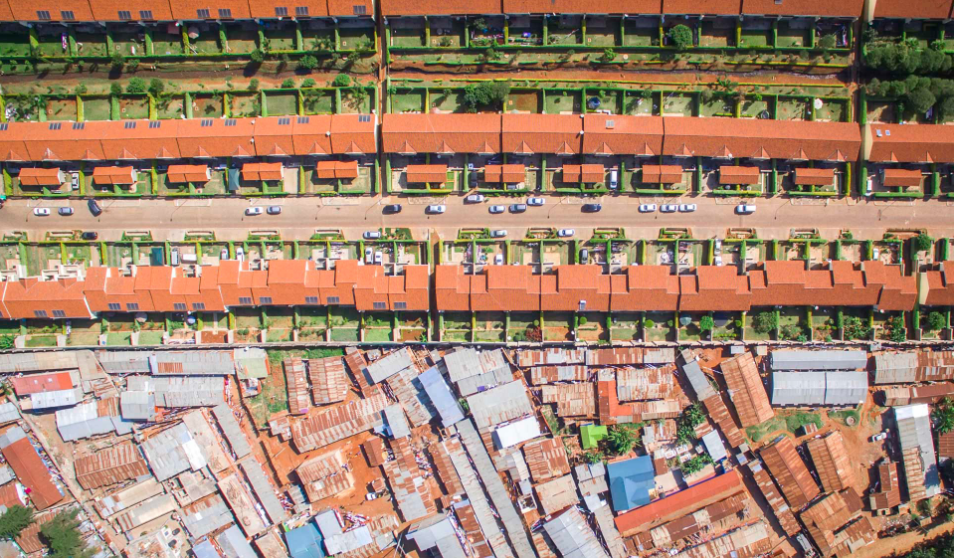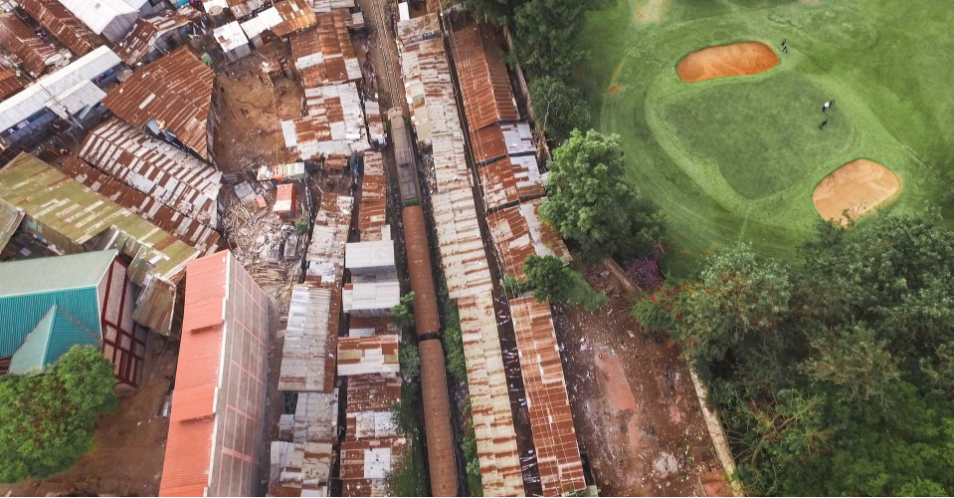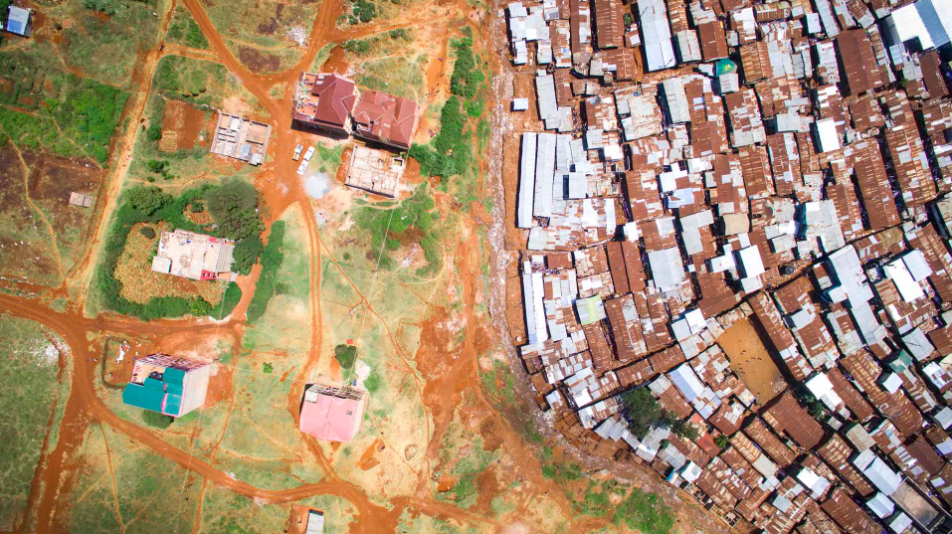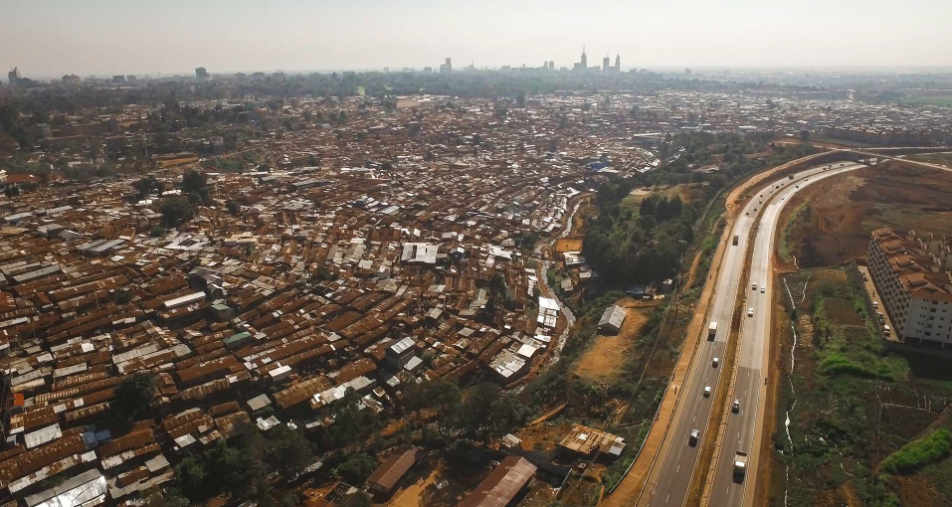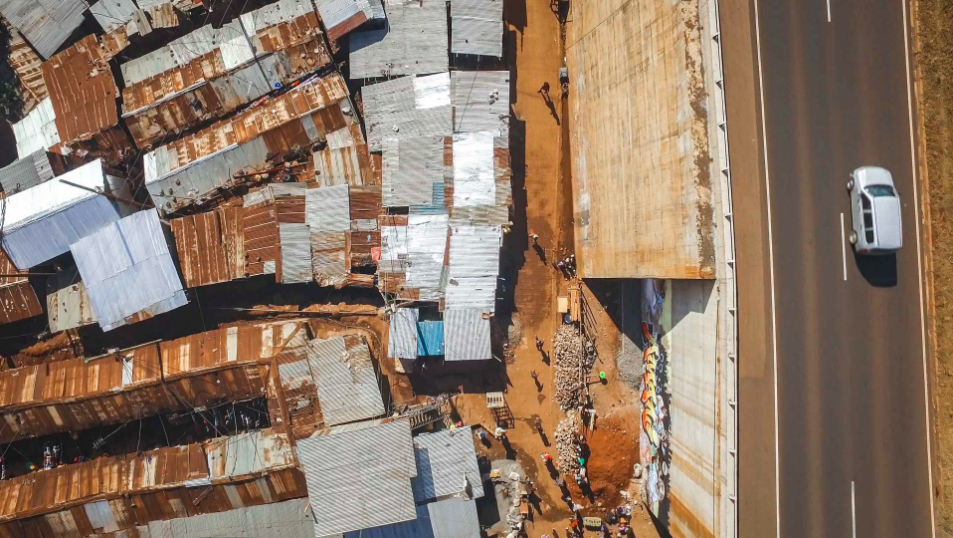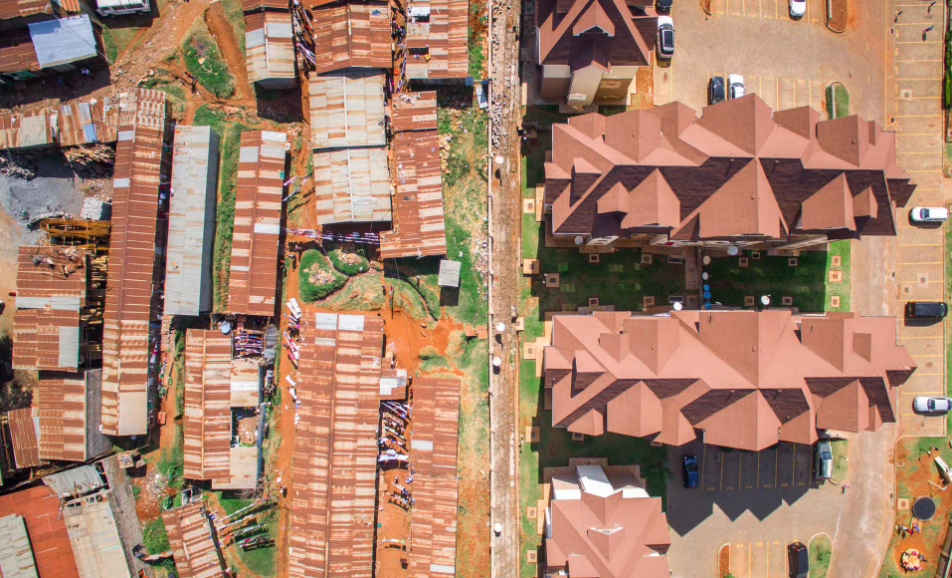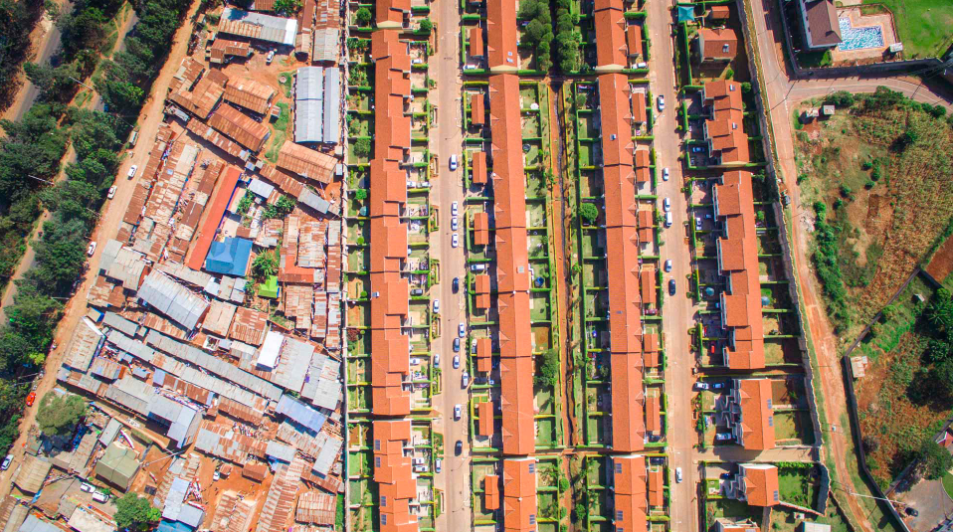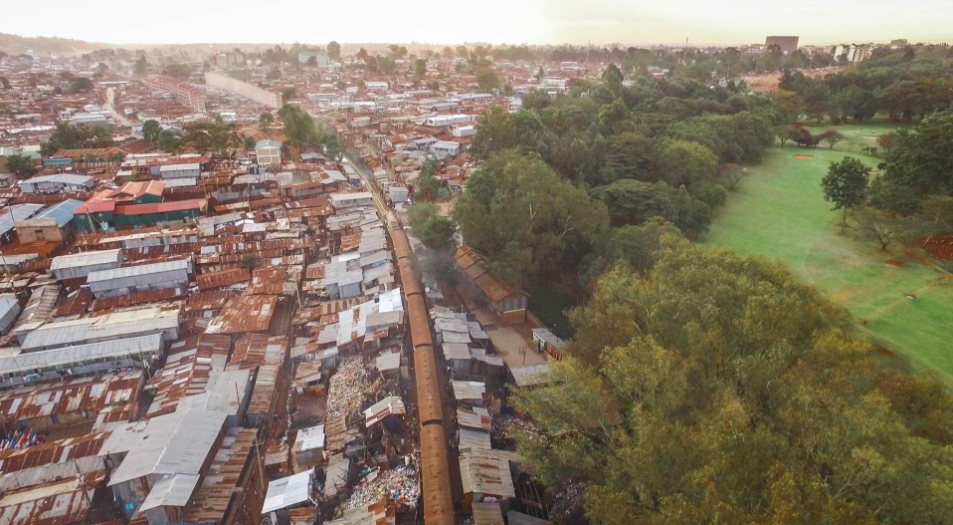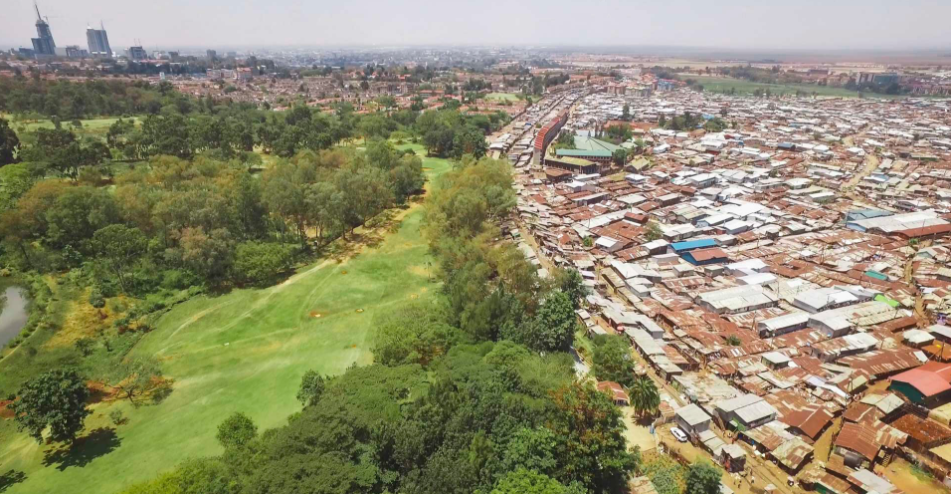The visiting of impoverished urban areas has become a major source of tourism in Brazil’s favelas, shantytowns in the Philippines and South Africa and areas of Los Angeles, Detroit and Berlin. There are many arguments for and against the practice, as well as questions as to who it benefits.
Read MorePutting Kenya’s Slums on the Map
These days, the Internet makes it possible to travel much of the world with a simple click of a mouse. But not every place where life gets lived is cartographically represented. This leaves entire communities, particularly slums and other “informal settlements,” invisible from state actors who could implement vital infrastructure like electricity and clean water. Using their feet, GPS technology and a lot of dedication, Primož Kovačič, Isaac Motisiamosa and their teams are collaborating to put Mathare, Kenya’s second largest slum, and its people on the map.
Share The Word Project - Jakarta
Share the Word Project is a worldwide art project mixing graffiti, photography and film, and using art to create bridges between cultures.This video was shot in Kampung Bayur, a neighbourhood of East Jakarta, in Indonesia. In a little more than 3 weeks, 15 murals were painted with words chosen by the inhabitants.
Read MoreEGYPT: Share The Word Project - Cairo
Worldwide art project mixing graffiti, photography and film, and using art to create bridges between cultures. Led by photographer Spag and graffiti artist Seb Toussaint, the project has taken place in 7 slums worldwide. This episode is based in Cairo, Egypt.
This video was shot in Mazarita, a neighbourhood situated in the South of Cairo. In a little more than 4 weeks, 15 murals were painted with words chosen by the inhabitants. All the murals were painted in freestyle.
Upwardly mobile Kenyans live in planned, gated communities. Sometimes these abut the poorest of slum communities, this one in Loresho.
Unequal Scenes: Nairobi
“It has been estimated that the richest 10 percent of the population of Nairobi accrues 45.2 percent of income, and the poorest 10 percent only 1.6 percent,” according to a 2009 study on urban poverty by Oxfam.
Statistics on inequality and poverty are ubiquitous in the developing world. They are often underwhelming, however, in their impact. What does 45.2 of income look like? What does “urban poverty” look like? As, of course, every statistic is relative.
The Royal Nairobi Golf Club sits directly adjacent to Kibera slum. Twice a day, a passenger train barrels through the slum, less than a meter away from people's homes and businesses. Next door, people play the game surrounded by greenery.
In Nairobi, a city of chaos, dynamism, and incredible unequal growth, this is even more difficult to portray. Yes, it has easily the poorest urban slums I’ve ever visited. In Kibera, a hilly community, every drainage is choked with tons of raw sewage and rubbish. Children play on live train tracks, running through the middle of the slum. Government services, aside from electricity, are nonexistent. The houses are made from a mixture of mud, sticks, and tin.
But also, yes, the wealthy parts of Nairobi are more difficult to see. They are hidden behind gated communities, ensconced in shopping malls, or wrapped in dingy-looking apartment buildings. Moreover, researching these inequalities is made difficult by the lack of searchable data sets, a draconian drone flying environment, and Nairobi’s infamous traffic problems.
Kibera is constrained not only by infrastructure but also the natural environment. The "river" at the bottom of the slum drains thousands of tons of rubbish into the Nairobi Dam every year.
The Unequal Scenes I have found in Nairobi are a mixture of traditional “rich vs. poor” housing images, but also depictions of how infrastructure constrains, divides, and facilitates city growth, almost always at the expense of the poorest classes. During my time there, I focused on a planned road that will bisect Kibera, Nairobi’s largest slum. This road will cut the slum neatly in two, displacing thousands of people, and tens of schools and clinics that are in its way. This road will help alleviate the city’s traffic problem, but it may cause more problems than it will solve. Just to the south, a new road has already cut off part of Kibera, causing people to cross it illegally, resulting in many deaths. From interviews with residents, it is unclear whether or not the planned infrastructure upgrades have adequately taken into account the public opinion.
This dynamism contributes to make Nairobi one of the most fascinating cities I’ve ever been to.
Read more at http://www.thisisplace.org/shorthand/slumscapes/#nairobi-48752
The Southern Bypass road has already lopped a portion off of Kibera, in the quixotic search for a less congested city. Although there is an underpass (visible at the bottom), people often cross the road from above, resulting in many accidents.
A planned road will bisect Kibera slum in Nairobi, displacing thousands of people.
The Southern Bypass road follows the contours of the river and slum next to it. In the distance, you can see the construction beginning on the new road, which will connect Ngong Rd to Langata Rd.
Cars glide over the brand new road, above the slum below.
The suburb of Loresho is home to the wealthy and the poor alike.
As in many places around the world, the rich and poor are separated by only a thin concrete barrier. But it represents much more than that.
These barriers, whether concrete or imaginary, represent an entire class separation, one that may not be surmounted for generations to come.
Amazing geometric patterns emerge from the air. "Straight" lines become slightly curved.
The train is a part of life to Kibera, a source of transportation, of annoyance, of time passing.
The chaos, noise, and density of the slum is neatly juxtaposed with the orderly calm green of the Royal Nairobi Golf Club, which opened in 1906.
THIS ARTICLE AND PHOTO SERIES WAS ORIGINALLY PUBLISHED ON UNEQUAL SCENES.
JOHNNY MILLER
Johnny Miller is a freelance documentary photographer and filmmaker based in Cape Town, South Africa. His 'Unequal Scences' project is meant to show the stark inequality seen in South Africa and in cities around the world. Check out his website and Facebook to find out more.
HAITI: The Painter of Jalouzi
Filmmakers David Darg and Bryn Mooser journey through Jalouzi, the largest slum in Haiti. One man is trying to transform the community by adding bright and vibrant colors to all of the homes, businesses, and buses.
VIDEO: Dirt Court Dreams in Africa
Just outside the southern wall of Kibera, the largest urban slum in Africa, is Sadili Oval Sports Academy. Meaning "well-being" in Swahili," Sadili is a social enterprise that uses sports as a means to reach out to children and young people in need - both in the slums and from across East Africa.
"Dirt Court Dreams" centers on Flo - a Kibera resident and tennis coach - and reflects how Sadili has made her life better and through her has, and is, improving the lives of many others.
UGANDA: Kids from This Slum Are Dancing Their Way Out of Poverty
There are several aspects of human life I strongly believe unite the world. You don’t need to speak the same language or share the same background to connect on any of these and that’s awesome!
What are they?
Food, science, math, sports, and the most fun… music and dancing. Which is partly why this video is so inspiring and went viral with over 14 million views last year.
Yes, these kids should clearly be onstage with Beyoncé for their incredible dance moves. But that’s not the only reason this video is fantastic.
The kids dancing in this video are known as the Ghetto Kids. They are from the slums in Kampala, Uganda, and thanks to their math teacher Dauda Kavuma they train almost daily to improve their dance techniques and the quality of lives for their families.
The Ghetto Kids dance video has allowed some of the children in this video to afford school supplies, stay in school, and even provide better homes for their families.
Sometimes it doesn’t take much to improve the lives of those living in poverty. In this case— a great teacher and people like you willing to share how incredible these kids truly are can make a huge difference.
Update: The Ghetto Kids are now working on creating high production videos, continuing to dance and perform and most importantly continuing their education, according to BBC. I hope to see these kids onstage with Beyoncé at the next Global Citizen Festival (if it’s okay with their math teacher and parents first).
You can go to TAKE ACTION NOW and help kids get the education they need and deserve.
MEGHAN WERFT
Meghan is a Digital Content Creator at Global Citizen. After studying International Political Economy at the University of Puget Sound she moved to New York. Originally from California she brings her love of yoga, kayaking and burritos to the big city. She is a firm believer that education and awareness on global issues has the power to create a more sustainable, equal world where poverty does not exist.

